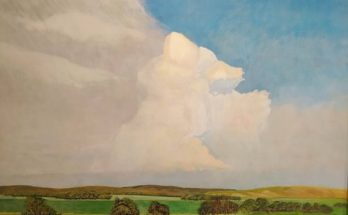By Rodrigo Diaz Guerrero
Governed by the Gregorian calendar, we go through life scheduling our activities according to the months and seasons designated in 1582, when Pope Gregory XIII promoted a new calendar that eventually replaced the Julian calendar throughout Europe. Further back, the Julian calendar had been inspired by the Egyptian calendar and both considered religious activities and, above all, the times of sowing and harvesting.
It is here—in agriculture—where the origin of calendars lies, reflecting the importance that people give to cycles, because seasonal cycles are part of survival and provide an understanding of life itself. Mircea Eliade, in his book “Treatise on the History of Religions,” explains. «We must draw attention from the beginning to the importance of time, the rhythm of the seasons, for the religious experience of agrarian societies. The farmer is no longer only involved in the ‘spatial’ sacred zones—the fecund soil, the forces active in the seed, in the shoots, in the flowers—but rather his work is integrated and governed by a temporal ensemble, by the round of seasons. This solidarity of agrarian societies with closed temporal cycles explains many ceremonies related to the expulsion of the ‘old year’ and the arrival of the ‘new year,’ with the expulsion of ‘evils’ and the regeneration of ‘powers’—ceremonies that are found more or less everywhere in symbiosis with agrarian rites.”
The discovery of agriculture was unequivocally an important development for human beings because they developed methods that ensure food production, and with them, a prodigious growth of the population. But Eliade emphasizes that many thoughts were born from the understanding of plant rhythms, and these were the cornerstone for the evolution of human thought. Agricultural activities became sacred rituals in primitive religions. In East Prussia, for example, it was customary for a naked woman to go to the fields to plant peas. Finnish women wore seeds in a menstrual shirt, in a prostitute’s shoe, or in a bastard’s stocking, expecting the enhancement of fertility of what was sown. These examples also illustrate the importance of women in agriculture. Women’s creative force was one of the fundamental intuitions in the worldviews of the time.
Agriculture also led to new thoughts about death. The dead, like seeds, are buried, coming into contact with subterranean forces, which led ancient civilizations to develop soteriological thoughts: souls can be purified and are attracted by the mystery of rebirth. Eliade says, “Similar to the grains buried in the telluric matrix, the dead await their return to life under a new form. That is why they approach the living, especially at times when the vital tension of the communities is at its maximum, that is, in the so-called fertility festivals; when the genetic forces of nature and of the human group are evoked, unleashed, exacerbated by rites, by opulence and orgy. The souls of the dead are thirsty for all biological overflow, for all organic excess because this vital overflow compensates for the poverty of their substance and projects them into an impetuous current of virtualities and germs.
“In the thought of the agricultural era, observation and comprehension revealed to humanity the fundamental unit of organic life, the analogy woman-field, generative act-sowing, etc., were mental synthesis of the understanding of the rhythms of life, of its importance, and constituted a decisive lesson in worldviews. And just like the primitive beliefs that, like the seed hidden under the earth, the dead can return to life. Skeptical thought also had its origin in the contemplation of the plant world and in the understanding of cycles: the human being is similar to the flower of the fields …”




